Cantharellus lutescens: camagroc
7 years ago · Updated 5 months ago
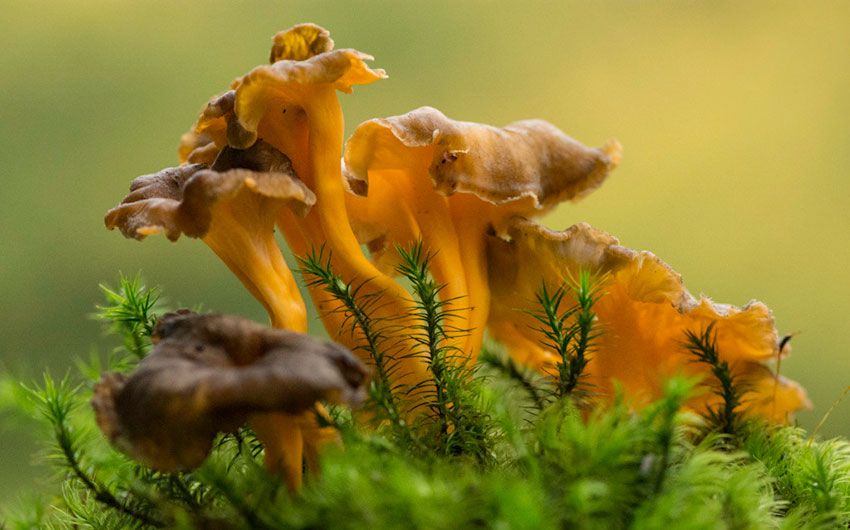
Yellow trumpet mushroom, cantharellus lutescens, cratherellus lutescens, camagroc... many names for a very common mushroom that covers the forest floor in yellow.
At La Casa de las Setas, we love this small, aromatic mushroom. So we'll tell you what it looks like, where to find it, and how to cook it.
Names of the wood trumpet mushroom or camagroc
Like all species of mushrooms, our little yellow trumpet also has a scientific name, Cantharellus lutescens (cratherellus lutescens). Lutescens means yellowing, due to the color of the stem of this mycological species.
However, it has a long list of popular names. This is due to its wide distribution and presence in our forests, as it is rare for a region not to have good spots for yellow trumpet mushrooms among its pine forests.
Some popular Castilian names for C. lutescens include trompeta amarilla (yellow trumpet), anguila de montaña (mountain eel) (due to its small size), gula de montaña (mountain gula), girolla anaranjada (orange girolla) and girolla amarillenta (yellowish girolla).
In Catalan, it is known as camagroc (yellow foot), trompette-de-la-mort or rossinyolic (due to its resemblance to the rossinyol or C. cibarius but smaller in size). In Basque it is called Salsa perretxiko hori and in Galician Trompeta marela. Other European names for this mushroom include Yellow foot (English), chanterelle jaune (French) and finferla, pifferi (Italian).

How to recognize yellow trumpets
One of the advantages of this small mushroom, the chanterelle, is that it is almost impossible to confuse it with another mushroom, unless it is a subspecies of the same species, which is also edible. The most difficult part is finding them, especially the first ones.
Despite its color, the camagroc is a mushroom that is very well camouflaged when viewed from above, but once you have seen one, the mountain is filled with color. It is not uncommon to walk over them without noticing, because when they appear, they sometimes do so like a blanket, covering the entire ground.
But let's list the characteristics of yellow trumpet mushrooms to be sure that we are dealing with a true mountain delicacy.
The cap of camagrocs begins to develop with a convex shape and evolves into a trumpet or funnel shape. The entire mushroom is hollow, from the cap to the stem, similar to the shape of a trumpet. The edges of the cap are scalloped, divided into thin lobes of uneven shape with an irregularly curled edge.
It is a small mushroom, with a cylindrical stem that rarely exceeds 7-8 cm, although under favorable conditions, we can see photos of yellow trumpets over 20 cm. It is fairly uniform in relation to the cap. The diameter is also small, between 2-3 and 7-8 cm. The color of the stem is an intense orange-yellow, very distinctive
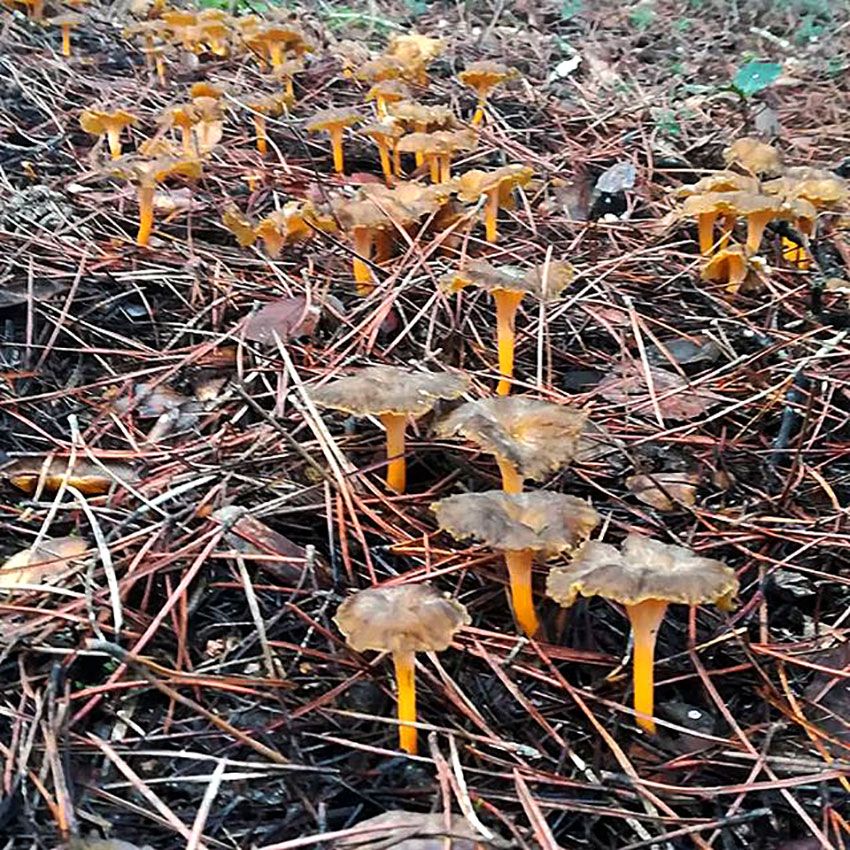
The color of the cap of the chanterelle is variable, ranging from brownish-brown to yellowish. It lightens towards the edge of the cap.
The hymenium of this mushroom is mostly smooth, with a few discreet folds, like longitudinal veins or ribs. The hymenium is slightly wrinkled and has a yellowish tone with reddish, orange, or earthy hues.
The flesh is tough, elastic, and fibrous. Although very rare, it is considered an excellent edible mushroom. It has an intense, fruity aroma and a very mild flavor. Of course, its small size means that you need to use quite a few to enjoy their flavor. Another advantage of this mushroom is that it does not usually become soft
When and where to look for yellow trumpets or eels.
This delicate mushroom has a fairly long season. Although the first ones can be found from the end of summer in areas that are not very hot and humid. The season for Cantharellus lutescens is said to extend from early fall until the end of winter, even after the first frosts. It is not uncommon to harvest large numbers of trumpet mushrooms even in February. Of course, this is in low-lying, well-protected areas.
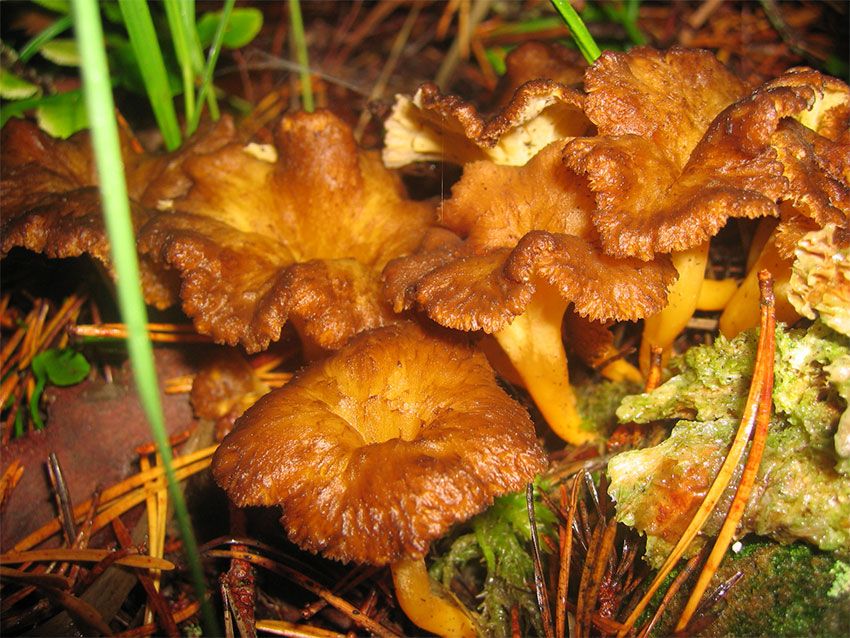
Where does the camagroc or yellow trumpet grow?
The habitat of the angula de monte is quite varied, although it has a preference for calcareous or limestone soils. Although we can mainly find them in pine forests, hidden under the pine needles of P. nigra and P. Silvestris, they are also found in oak forests, especially in the most humid areas
Chanterelles grow in large, numerous groups. Yellow trumpet mushrooms can be overwhelming in number and are the cause of more than one backache. You can spend hours picking trumpets without hardly getting off the ground, so be patient with them. They camouflage themselves very well, especially among moss and pine needles.
Photographs of chanterelles, Cratherellus or Cantharellus lutescens
Its orange-yellow color contrasts with the forest floor, whether moss or pine needles. In addition, its delicate size makes it one of the most photographed species. We show you some photos of camagrocs, although you probably have a spectacular image of lutescens. Send it to us and we will add it to this gallery: -)
Similarities and confusion between the yellow trumpet mushroom, camagroc or camagroc and other species
Due to the very distinctive appearance of these small mushrooms, it is unlikely that cratherellus lutescens will be confused with other species. And if it does happen, they are not dangerous because the species that bear some resemblance are also excellent in cooking. We will list other species of chanterelles that, due to their morphology, could cause some doubts in identification.
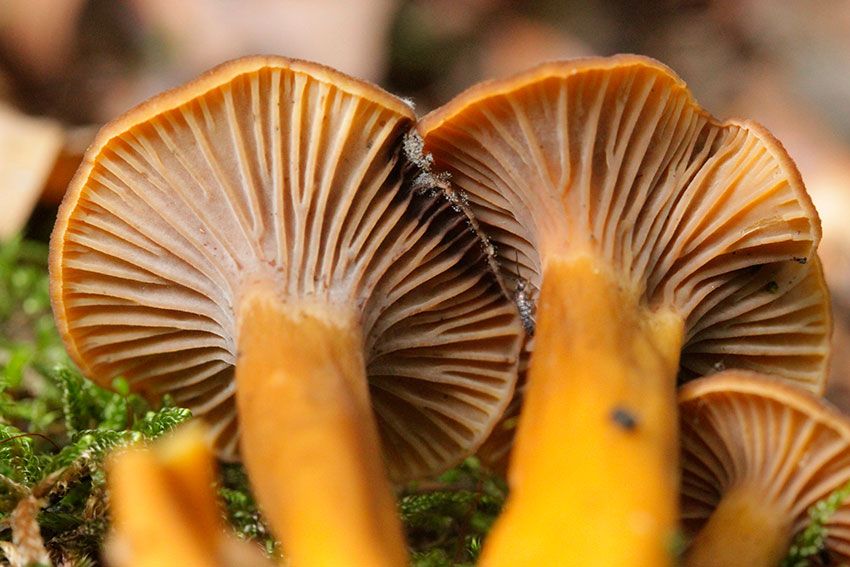
Sometimes, due to ignorance, the yellow trumpet mushroom is confused with the cratherellus tubaeformis. To distinguish between them, it should be noted that this species has a clearly differentiated stem, and the folds of its hymenium are very evident, much more so than in our yellow trumpet mushroom.
In addition, the color of this species is grayer and less bright and vivid. As for edibility, the tubaeformis is considered an excellent edible mushroom and is widely sold in certain areas such as Galicia.
There are subspecies of our Craterellus lutescens which, despite slight changes in morphology and color, are also very good for cooking. These include the albidus variety (with whitish tones), crocatus, niveipes, luteocomus, and the schizocroica variety or gray trumpet (with a gray tone across its entire surface).
Cantharellus lutescens in the kitchen
Throughout this article, we have already mentioned the high regard in which this yellow trumpet-shaped mushroom is held. For many, it is one of the best mushrooms, and what's more, it is very easy to preserve. Its size and flavor make it suitable for all types of dishes and preserves, from fish and meat to rice, liqueurs, and desserts. Its delicate flavor and fruity aroma are its best features.
As for how to cook them, they are very similar to their sister species, Cantharellus cibarius or chanterelle. Both species are rarely attacked by insects and larvae, and are also very easy to dehydrate. In addition, they tolerate cold very well and can be found when there are almost no other species in the forest. This is why they are doubly valued by mushroom hunters.
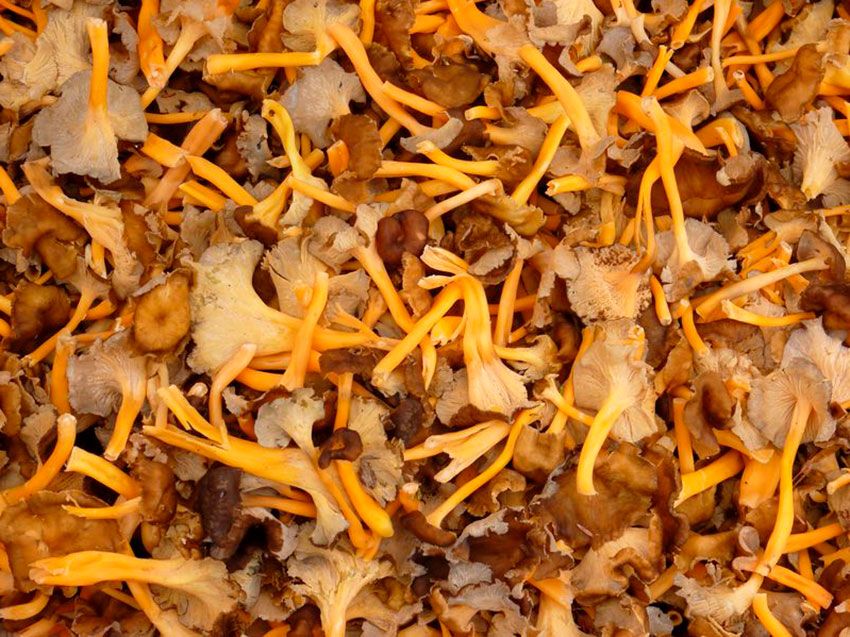
Nutritional information for yellow trumpet mushrooms (average values per 100g of fresh product)
- ENERGY VALUE 125 KJ/ 31 Kcal
- FATS 0.5 g, of which saturated 0.06 g
- CARBOHYDRATES 4.0 g, of which sugars < 2 g
- PROTEINS 2.3 g
Chanterelles are a versatile mushroom. You can use them in all kinds of stews. They will add extra flavor to your recipes. They have a fruity, mild taste. If it's the right season and you're lucky enough to find a good patch of chanterelles, you should seize the opportunity and pick a good amount. We can dry them and use them throughout the season.
However, they usually have a lot of impurities, soil, and plant debris. . . be careful when cleaning them and pay special attention to the inside of the stem. Since they are hollow, they can retain some impurities. In this sense, they are very similar to black trumpet mushrooms, and it is in the hollow of the stem that you may find a surprise.
Drying trumpet mushrooms: the best option
Dehydrating them is very quick and easy. They are small mushrooms and also hollow. This means that they dry very quickly. What's more, you don't need to rehydrate them before cooking.
They can be added directly to dishes and will be perfect in no time. Another option is to grind them and use them as flour. As they are a very aromatic species, they will add flavor and aroma to all your dishes.
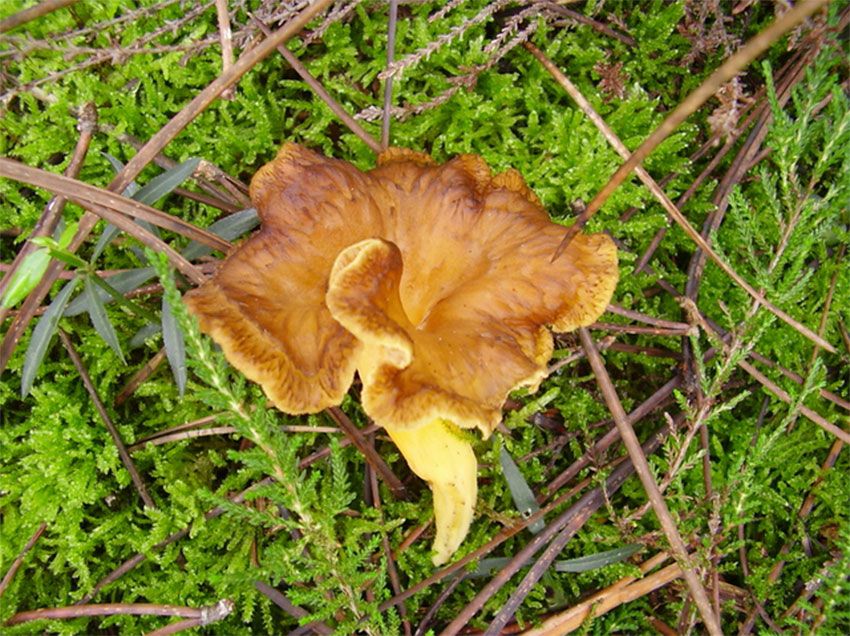
How to dehydrate yellow trumpet mushrooms?
Before starting to dehydrate our eels, cantharellus lutescens, we must be very careful when cleaning them. There is usually dirt and soil in the hollows, and once dehydrated, it is difficult to remove.
It is not recommended to submerge or wash camagrocs in abundant water. These mushrooms absorb the most moisture, which causes them to lose their characteristic flavor and take longer to dry. The ideal is to use a brush and a damp cloth.
It should be noted that these small mushrooms are very easy to dehydrate. Using an electric dehydrator, they will be ready in a few hours, no more than 4 hours at a temperature of 55º, and if we dry them naturally, they will take no more than 2-3 days to do so.
To dry chanterelles naturally, we can spread them out on a rack to speed up the process, or place them dry on a cloth or newspaper. They will need to be moved and turned over so that they dry evenly.
Another way is to tie them to a string and hang them in the sun, or even use an extendable dryer like this model. Some people also dehydrate them in the oven, with the door slightly open and at a very low temperature, around 60-70°C.
All that's left to do is try it!
Now that you know all the secrets of C. lutescens, you surely know where to find them when they are in season. Don't forget to send us photos of your harvest and we will post them on our Facebook page. We love seeing them!
Cheers and mountain elvers!

Te pueden interesar